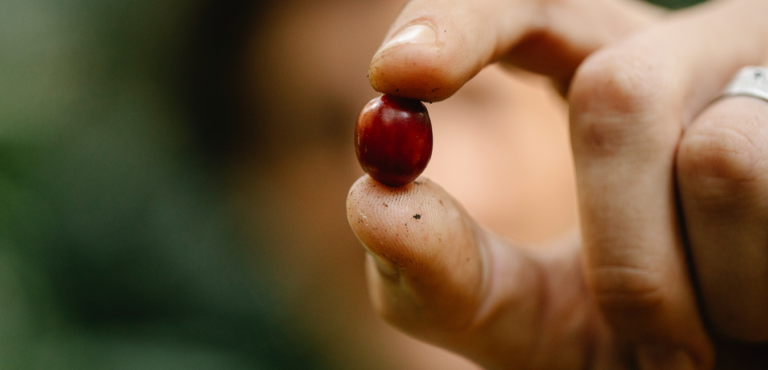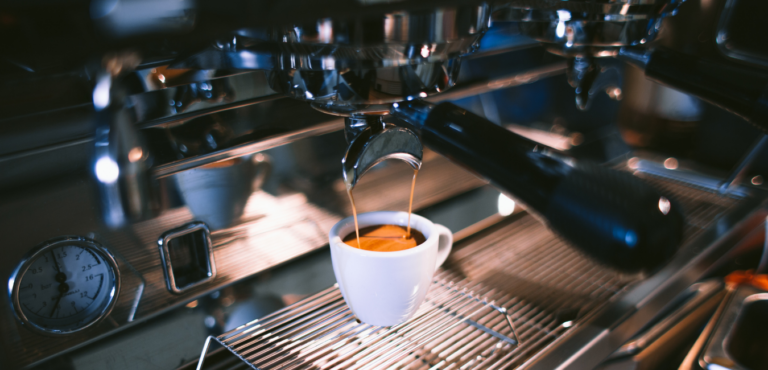Home Coffee Roasting: The Handholder
Roasting coffee at home is the pinnacle of coffee personalization. It’s one of the most fascinating parts of making coffee and having control over the process lets you brew the perfect cup. Within the hierarchy of factors that affect coffee, roasting is second only to your choice of green beans. The reasons to start roasting at home are abundant; freshness, personalization, price, supporting coffee farmers, and impact on the environment, to name a few. Roasting your beans before you brew makes all the difference in flavor.
When you roast at home, it’s an entry into the seemingly endless world of single-origin coffee. There’s also the issue of flavor dissipation. Green beans stay fresh for several months leading up to a year. But once the beans are roasted, the flavor lasts merely a few weeks. This is why we recommend that you roast at home, and in small batches. A cup of coffee made from freshly roasted beans tastes better because all the natural flavors stay within the bean instead of escaping into the atmosphere with no hope of return.

Home roasting can be made as simple or as complicated as you’d like. Having the right appliances gives you more control over your roast, but even the most rudimentary home roasting serves you a cup that’s miles ahead of pre-roasted coffee. As an added advantage, green beans are significantly cheaper than their roasted counterparts. Having objectively better coffee while shelling out fewer funds makes sense in the long run. It also broadens your awareness of coffee and lets you understand the factors that drive your favorite cup of joe.
In the distant past, most households were accustomed to buying raw coffee beans and roasting when necessary. Over the last century, the trend heavily favored roasted beans because of their convenience. This hit the farmers hard, to the point where legacies ended and a lot of good coffee was lost to large corporations in an attempt to survive the boom in demand for instantly accessible coffee. Today is a new day though, and we have the means and infrastructure to support farmers from across the world. We do so by purchasing green coffee directly from the producers.
The path to reclaiming your right to magical coffee is mildly challenging and we’re here to render these challenges powerless. Just follow these simple steps and you’ll start roasting at home in no time.
Step 1: Sourcing Green Coffee Beans
Your coffee is only as good as the beans you roast. It may seem tempting to go with the house blend but you have to fight this feeling. Understanding what you like requires you to taste the unadulterated flavors of each origin.

Two of the most important keywords while dealing with raw green coffee are traceability & single-origin. These terms let us know that everyone in the supply chain is treated fairly and is recognized for their contribution. To preserve the freshness and taste of the coffee for longer, store your green beans away from direct sunlight preferably in a cool & dry environment. To get rid of some of the guesswork, check out our welcome kit. It comes with beans of three different origins along with all the goodies to start roasting at home.
Note: While buying high-quality green beans, remember to check the score for the coffee as per Cup Of Excellence or SCA standards. Anything higher than 80 qualifies as specialty coffee.
Step 2: Choose a Roaster
There are several ways to roast coffee at home. All you need is the application of heat and constant agitation to avoid burning. Among the DIY options for roasting coffee, some are better than others. Here are the options:
- Stovetop
- Hot air popper
- Home Coffee Roaster
Stovetop roasting typically employs a skillet upon which raw green beans are added, heated, and agitated when necessary. But this method yields an uneven roast and it’s conceivable to end up with scorched beans together with raw beans. An alternative would be a wok since it tends to spread the heat more evenly, but it demands a lot in terms of effort and soon proves tiresome. For skillet/wok roasting, you’d need to agitate the beans yourself while keeping an eye on the heat source. Oven roasting is worse. Roasting beans is a process that needs constant agitation, and placing beans on a baking sheet in the oven bypasses this requirement entirely. The results are bound to be terrible.

Popcorn poppers are a great place to start. They’re typically used for small quantities and tend to produce a relatively even roast under the right circumstances. The key is to use no more than 3-4 ounces at a time. Every popper is different and creating the perfect roast demands a deeper understanding of your popper. Does your popper run too hot or not hot enough? Have you added too much coffee or too little? Is your popper in a ventilated part of your house? Do your beans need more agitation? Asking these questions helps a great deal with consistency.
If you find yourself wanting to roast more frequently or have more control of the roasting process, then it’s time for a home coffee roaster. There isn’t just a one-size-fits-all roaster for everyone, but the perfect roaster for you is out there.
Depending on the home roaster you choose, it may or may not come equipped with temperature control, automation, smoke reduction, airflow regulation, and different roast profiles with custom settings. You’ll be choosing between air roasters and drum roasters. The first thing to define is your budget and then prioritize the other key requirements like batch size, custom profile design, smokeless, and amount of counter space to name a few. The Bunafr Smart Home Coffee Roaster comes equipped with all the aforementioned and more.

Air roasters are often on the smaller side and roast evenly with no scorching in small batches. Drum roasters often accommodate bigger batches but these machines are typically larger and need more attention. We still recommend that you do a bit of research before buying, to make sure you’re getting a roaster that’s tailored to your needs. If you need more help, just write to us and we’d be happy to help you make the decision.
Air roasters and hot air poppers operate at a higher temperature typically taking around 5 minutes to finish roasting. Drum roasters produce a relatively lower but steady heat which needs up to 15 minutes. While this is generally true, batch size influences roast time as well.
Step 3: Roast Process
Understanding the different stages of roast helps you control the flavor of the cup. Each phase brings out different flavors from the bean and once you’ve experimented with a few different roast levels, your preferred roast profile will be made apparent. Here’s a handy representation of all the stages.

If you’ve already purchased a home coffee roaster, it most likely comes with different roast profile presets. Initially, it’s good to follow instructions until you get a feel for how your roaster works and eventually experiment/create something that better matches your preferences. To steadily improve your roast, it’s important to stay flexible. For a more comprehensive view on roasting, click here.
Quick Steps For Roasting On Different Devices/Equipment
Stove Top:
The secret to having a good roast on the stovetop is to constantly agitate the beans and quickly remove the beans from the device onto a cooling rack to bring the temperature down and avoid over-roasting.
Hot air popper:
Your hot air popper should take about 3 minutes to reach the end of the first crack. The green coffee beans need to be agitated right from the beginning of the roast cycle which gives you more control during the roast development stage. Just make sure not to overfill the device because larger batch sizes work against uniformity. That’s why we recommend smaller batch sizes and monitoring your bean while it roasts.
Home Coffee Roasters:
Broadly, there are two types of home coffee roasters. Ones that allow for custom roast profiles and ones that come with presets. Roasters with presets (like Behmor, Gene, Fresh Roast, and some hot-tops) allow for very little in terms of freedom whereas their counterpart accommodates a lot of customization. Artisan is an open-source software that lets you design a personalized roast profile to match your preferences.
Devices like Ailio, Roest, Ikawa, and the hottop programmable make for an excellent option if you’re looking for a roaster that gives you full control over the roast process through fan speed and intensity of heat source. Although Ikawa and Roest are technically sample roasters which only let you roast a very small amount of coffee.
Once you start feeling confident with the basics of home roasting, the fun begins. If you’re using a popper, consider investing in a home roaster. It lets you experiment efficiently. You’ll soon realize that there isn’t just one perfect roast profile for everyone but rather one that you like the most, which lets you appreciate the different flavors that characterize each profile. Typically people find their favorite profile after a few iterations and that’s how it’s done in specialty coffee shops too.
To avoid some of the most common home roasting mistakes, check out our recommended reading.

To broaden your horizons, remember to use a variety of beans from different origins. Beans behave differently depending on conditions. For instance, something that damages the flavor of the Ethiopian bean might bring out the best in a Brazilian bean.
Keep a journal next to your roaster and track roast attributes like time and temperature of first crack, total roast duration, etc. Make a note of what you liked from each batch, the flavors, and the procedure you followed. While home roasting may seem like a daunting step, it’s a lot of fun and quite easy once you’ve got the basics down. Start today with the Bunafr Smart Home Coffee Roaster, and never look back.








